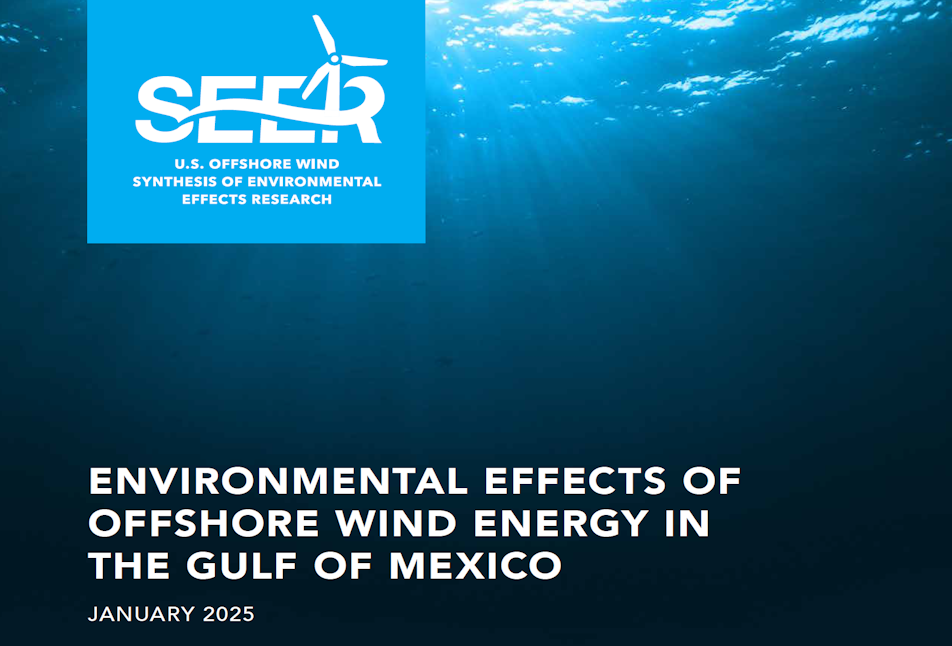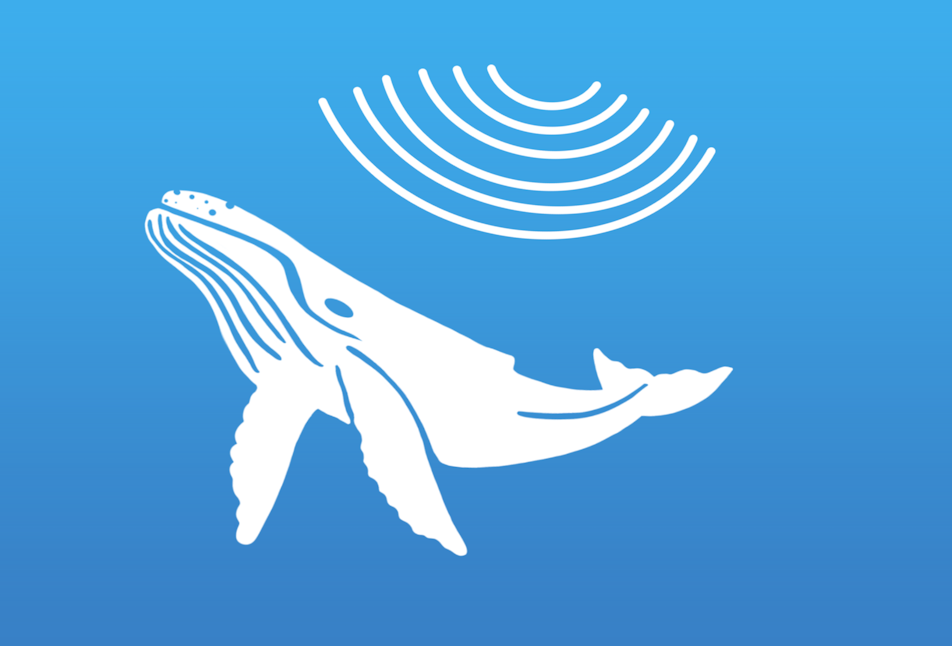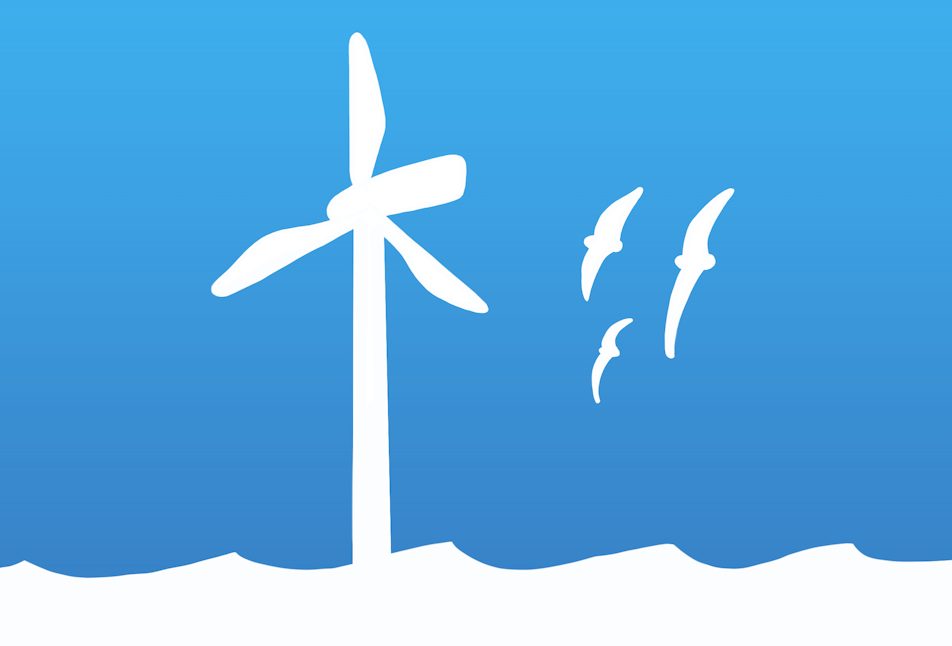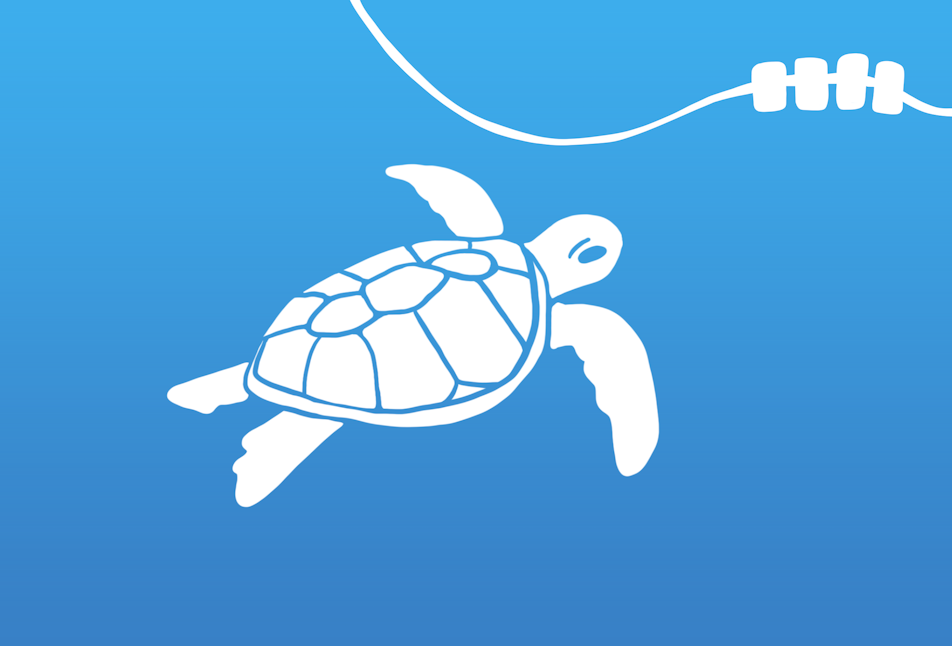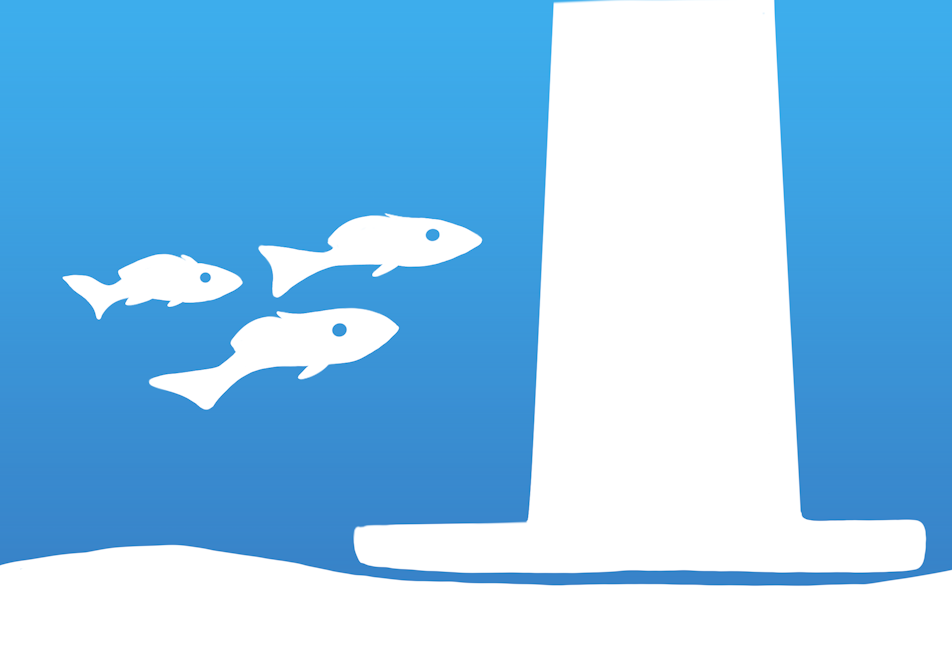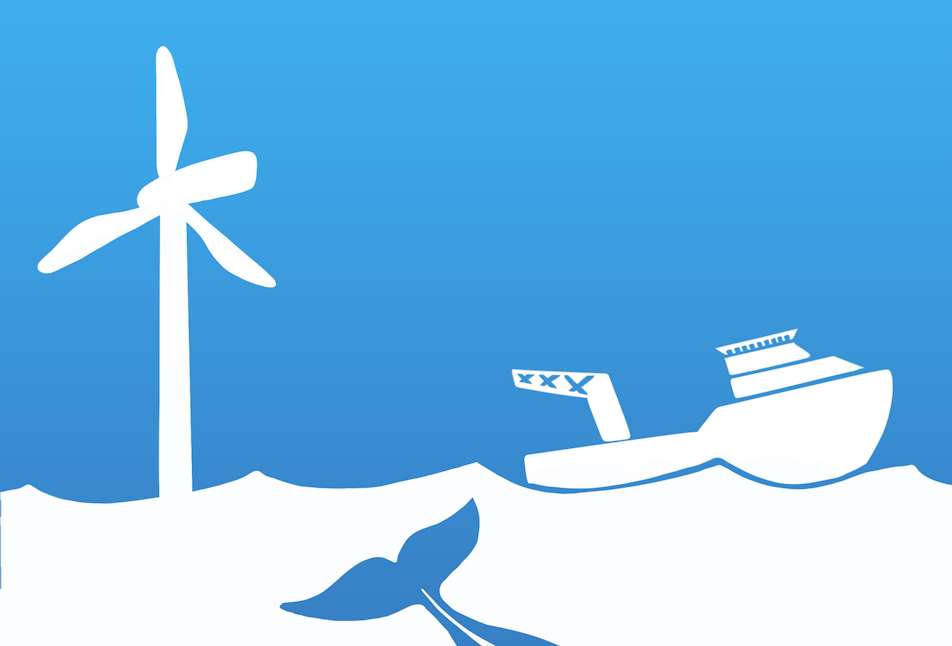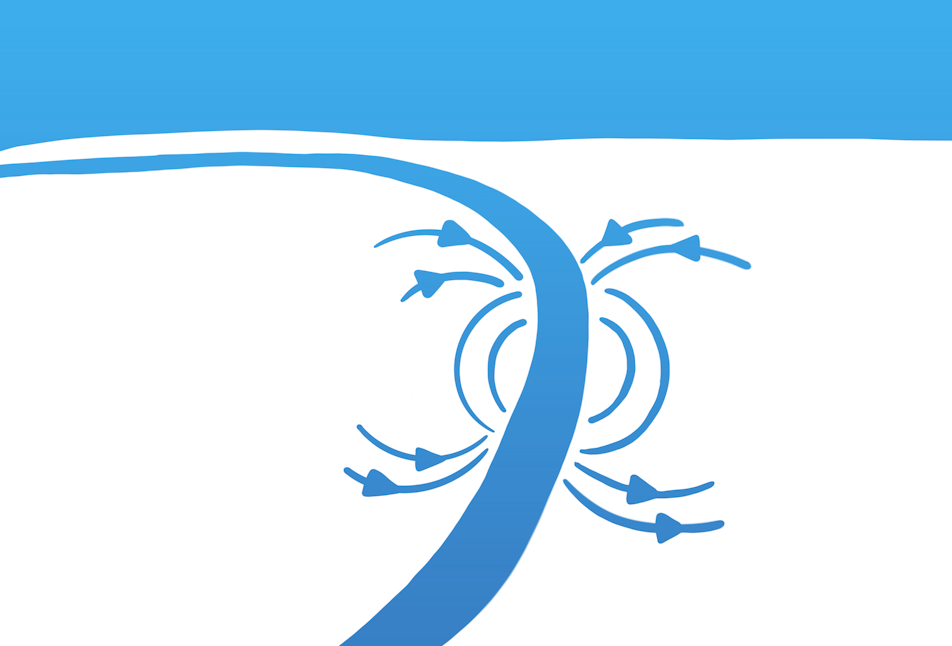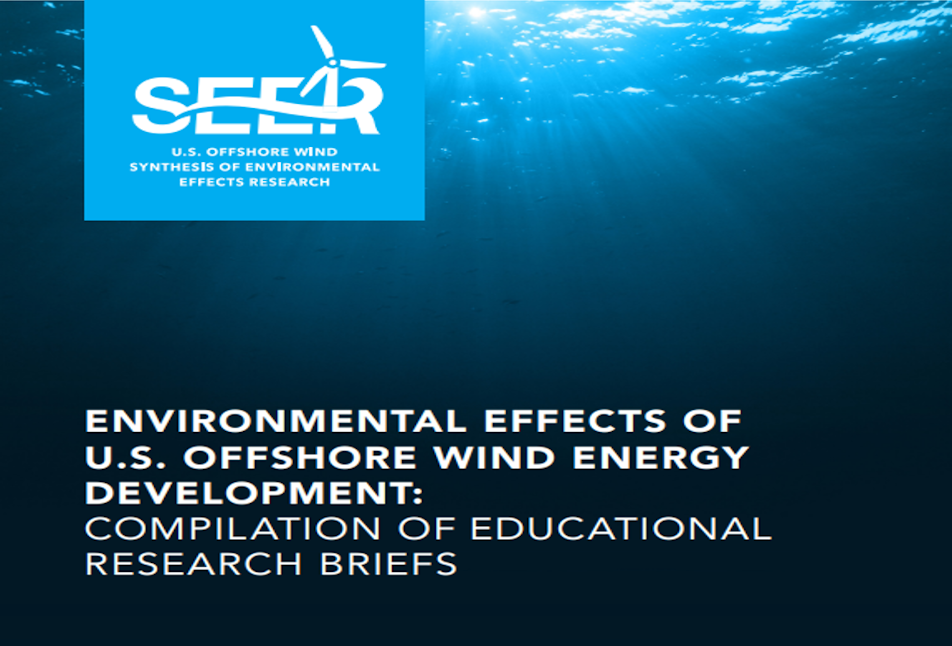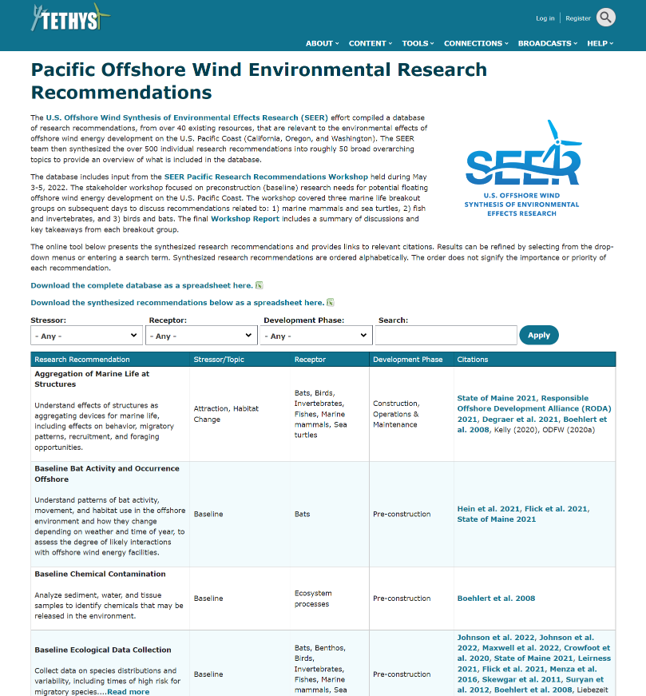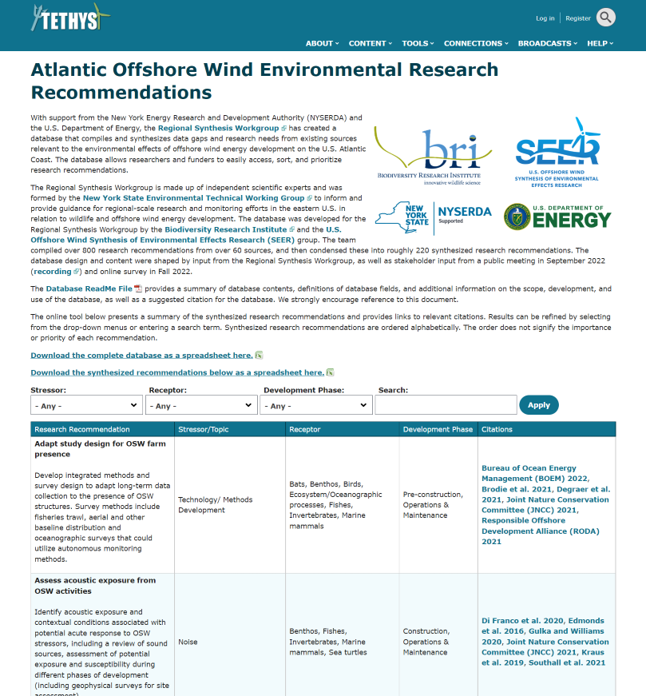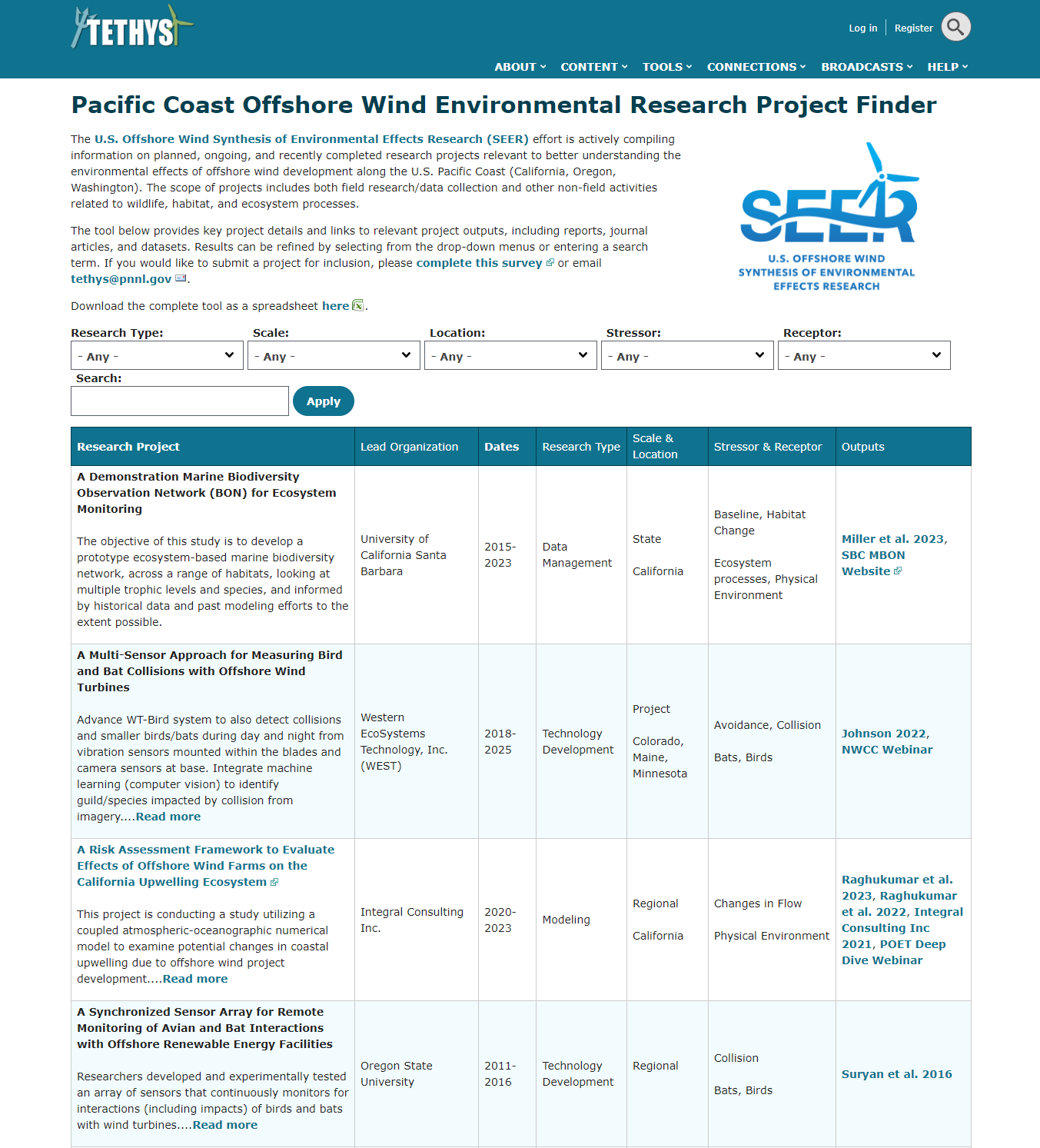Project Overview
At the direction of the U.S. Department of Energy’s Office of Energy Efficiency & Renewable Energy Wind Energy Technologies Office, Pacific Northwest National Laboratory and National Renewable Energy Laboratory are jointly leading a multi-year collaborative effort to facilitate knowledge transfer for offshore wind research around the world. The U.S. Offshore Wind Synthesis of Environmental Effects Research (SEER) effort aims to synthesize key issues and disseminate existing knowledge about environmental effects, inform applicability to U.S. waters, and prioritize future research needs. Download the SEER Factsheet for a high-level summary.
Project Objectives
- Succinctly summarize the understanding of environmental effects, monitoring tools, assessment methods, and mitigation strategies for offshore wind development on the U.S. Atlantic and Pacific Coasts based on existing research from around the world.
- Examine which of the state-of-the-art methods and technologies are relevant to offshore wind environmental issues specific to the U.S. industry.
- Identify knowledge and research gaps based on the: 1) diversity of species, habitat uses, and stressors in U.S. Atlantic and Pacific Coast waters, 2) U.S. environmental legal/regulatory structure, and 3) offshore wind technological trends and innovations.
- Collaboratively develop outcomes together with existing science entities and regional working groups to fully leverage community expertise.
Outcomes
- Research Briefs: Review state of the knowledge on stressor/receptor interactions, provide evaluation of technical considerations, monitoring methods and technologies, mitigation measures, and cumulative impacts.
- Webinar Series: Disseminate findings presented in Research Briefs to the offshore wind industry and others who are interested.
- Research Recommendations: Summarize information gaps, barriers, and current challenges for U.S. Atlantic and Pacific Coasts to inform or guide future development efforts.
- Pacific Projects Finder: Compile information on planned, ongoing, and recently completed research projects relevant to better understanding the environmental effects of offshore wind development along the U.S. Pacific Coast.
NEW Gulf of Mexico Research Briefs
The SEER team has published a new set of educational research briefs on the environmental effects of offshore wind energy development in the U.S. Gulf of Mexico. The booklet is separated into ten sections, each of which focuses on a particular topic, including ecosystem processes, coastal habitats, benthic habitats, birds, bats, flying insects, sea turtles, marine mammals, fish, and marine invertebrates.
Atlantic and Pacific Coast Research Briefs
Through significant stakeholder outreach and engagement efforts, a set of research topics was identified that cover a range of stressor/receptor interactions, technology considerations, and cross-cutting themes that are pertinent to offshore wind development on both the U.S. Atlantic and Pacific Coasts.
In 2021 and 2022, the SEER team hosted a series of free, public webinars that presented findings from the briefs and featured panel discussions with subject matter experts, followed by question-and-answer periods. All webinar recordings are now available.
- Underwater Noise & Entanglement Considerations for Offshore Wind Farms (November 30, 2021)
- Effects of Offshore Wind Farm Structures on Fish Ecology & Benthic Disturbance (December 15, 2021)
- Bat and Bird Interactions with Offshore Wind Energy (February 8, 2022)
- Electromagnetic Fields & Vessel Collision: Effects on Marine Life from Offshore Wind Energy (February 24, 2022)
In 2023, the SEER team continued its free, public webinar series in order to share the latest research on the potential environmental effects of offshore wind energy development, including minimization and monitoring strategies.
- Regional Surveys to Improve Understanding of Ecosystems and Relevance to Offshore Wind Energy Development (May 31, 2023)
- Recent Advances in Autonomous Environmental Monitoring Technologies to Support Offshore Wind Energy Development (July 6, 2023)
- Emerging Technologies and Infrastructure for Monitoring Bats and Birds Offshore (July 12, 2023)
- Environmental Considerations for Nearshore Ecosystems from Cable Landfall, Navigation, and Port Development for Offshore Wind Energy (September 13, 2023)
In 2024, the SEER team is continuing its free, public webinar series to share the latest research on the potential environmental effects of offshore wind energy development.
- Oceanographic Responses to Offshore Wind: From First Principles to Potential Effects (July 23, 2024)
- Social Perceptions of the Environmental Effects of Offshore Wind Energy Development (August 21, 2024)
- Exploring the Potential Environmental Effects of Offshore Wind Energy in the U.S. Gulf of Mexico (POSTPONED)
Subscribe to the Tethys mailing list for updates.
Research Recommendations
Pacific Coast
The SEER effort compiled a database of research recommendations, from over 40 existing resources, that are relevant to the environmental effects of offshore wind energy development on the U.S. Pacific Coast (California, Oregon, and Washington). The SEER team then synthesized the over 500 individual research recommendations into roughly 50 broad overarching topics to provide an overview of what is included in the database. An online tool is now available that presents these synthesized research recommendations and provides links to relevant citations.
The database includes input from the SEER Pacific Research Recommendations Workshop held during May 3-5, 2022. The stakeholder workshop focused on preconstruction (baseline) research needs for potential floating offshore wind energy development on the U.S. Pacific Coast. The workshop covered three marine life breakout groups on subsequent days to discuss recommendations related to: 1) marine mammals and sea turtles, 2) fish and invertebrates, and 3) birds and bats. The final Workshop Report includes a summary of discussions and key takeaways from each breakout group.
Atlantic Coast
On behalf of the Regional Synthesis Workgroup, the Biodiversity Research Institute and the SEER team also created a database that compiles and synthesizes data gaps and research needs from existing sources relevant to the environmental effects of offshore wind energy development on the U.S. Atlantic Coast. The team compiled over 800 research recommendations from over 60 sources, and then condensed these into roughly 220 synthesized research recommendations. The database design and content were shaped by input from the Regional Synthesis Workgroup, as well as stakeholder input from a public meeting in September 2022 and online survey in Fall 2022. An online tool is now available that presents these synthesized research recommendations and provides links to relevant citations.
Pacific Coast Offshore Wind Environmental Research Project Finder
The SEER team is actively compiling information on planned, ongoing, and recently completed research projects relevant to better understanding the environmental effects of offshore wind development along the U.S. Pacific Coast (California, Oregon, Washington). The scope of projects includes both field research/data collection and other non-field activities related to wildlife, habitat, and ecosystem processes.
The Pacific Coast Offshore Wind Environmental Research Project Finder provides key project details and links to relevant project outputs, including reports, journal articles, and datasets. Results can be refined by selecting from the drop-down menus or entering a search term. If you would like to submit a project for inclusion, please complete this survey or email tethys@pnnl.gov.
Contact Information
Any questions related to SEER can be directed to the following individuals:
- Hayley Farr, Pacific Northwest National Laboratory
- Cris Hein, National Renewable Energy Laboratory

